SinoSoldier
Colonel
The 5-segment 3.5-m-diameter motor is approaching the Space Shuttle SRB and SLS SRB in terms of thrust at almost 13650 kN. Any idea what stage of development it is in?
It is not approaching but on the same level if not higher. The picture says average thrust 1393.5t, while shuttle and SLS 4 segment SRB's stated 1500t is max for a brief period 10 seconds. Their total lengths are the same, so their thrust level is the same.The 5-segment 3.5-m-diameter motor is approaching the Space Shuttle SRB and SLS SRB in terms of thrust at almost 13650 kN. Any idea what stage of development it is in?
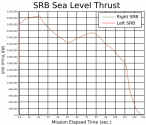
The configuration of the Long March 9 rocket has not been determined, and it is not said that the old Long March 9 will definitely not exist. CASC officials have been emphasizing the first flight of the Long March 9 around 2030. The new Long March 9 is still in its early stages, and upon careful analysis, you can see that almost all the designs for the old Long March 9 have been completed.I have no information about the development stage, two segment SRB has been "completed" for more than a year. In case of SRB, adding more segments to reach 44m long isn't something difficult. The key tech is the segmentation/joint, three joints isn't much different from one joint.
The real question regarding how far, fast this 5 segment SRB has gone or will go is what do CASC want to use it for. This SRB was part of the SLS style CZ-9 proposal 10 years ago. As we know now how CZ-9 would look like It may never be used just like YF-130 when they all lost their applications on CZ-9. It probably will end up as a 技术储备 (technology reserve), therefor it likely has a low priority, so don't expect much.
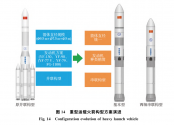
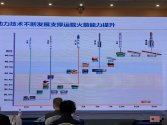
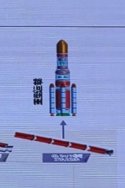
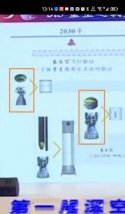





I have no clue of what you are talking about.The configuration of the Long March 9 rocket has not been determined, and it is not said that the old Long March 9 will definitely not exist. CASC officials have been emphasizing the first flight of the Long March 9 around 2030. The new Long March 9 is still in its early stages, and upon careful analysis, you can see that almost all the designs for the old Long March 9 have been completed.
The Long March Nine Rockets are definitely a large series. There won't be only two configurations of bare rods. The life cycle of the Long March Nine is 30 years and will continue to improve until 2060. What is mentioned now is only the basic configuration of the Long March Nine.
The first stage of the new Long March 9 rocket is controlled at an altitude of around 50m. The possibility of installing a booster still exists. If the Long March 9 is as high as the first stage of a starship rocket, there is basically no possibility of installing a booster
View attachment 120425
In this picture of the Long March 9th. FG-1100 may be the official name for the 3.5m multi stage solid rocket.
FG is the number of CASC's solid rocket, which is more commonly found in old literature (the Long March rocket has a solid rocket plan, so it can be found)
If you study this diagram, especially if you are familiar with fuel volume, you will find that there are significant problems with the second and third stages of the New Long March 9 rocket. This is an important reason why I judged the technical status of the New Long March 9 to be very primitive.
It's not easy to make the first flight of this model in 2035, as it hasn't entered the detailed design of the rocket yet
We know DSEL is pretty bad in making ppt regarding areas outside of their responsibility.The following is the PPT of other speakers at the same conference on the Long March Nine Rocket, which was first released by DSEL before or after April 25, 2023.
It describes a variant of the 16th edition of Long March 9. The 4x solid boost version of the Long March 9.
This version of the Long March 9 has a takeoff thrust of 7000-8000 tons.
I knew about its existence around 2020.
During the same period, I also conducted an analysis and said that the Long March 9 currently released by CASC is not a complete version of the Long March 9. We can only talk about the medium-sized Long March 9th. Because the first stage thrust and total weight of the 16th version of the Long March 9 are too small. That's why there is the term "spreading big cakes" criticized by domestic enthusiasts.
The first level of the actual Long March 9 can be extended.
And this picture confirms my point that the Long March 9 has always had designs with LEO over 200t. Its rocket's first stage is elongated.
So, I suggest that no one should think that the Long March 9 will only be what you see today. The height of the first stage of the Long March 9 rocket, especially the key load-bearing rings (3 rings, 12 point connection) used to fix the booster rocket, currently appears to match the height of potential large boosters (liquid or solid).
In the initial design of the Long March 9, CASC did not consider the independent development of the core level polished rod shape at all. After 2015, the need for heavy carrier rockets to be reused was put on the agenda, and bare rod rockets became a necessary requirement to be met. The original 9.5M diameter design cannot accommodate the requirement of YF130 modified nozzle arrangement for 3 turns. That's why a new configuration of 10.6 meters is generated.
But this is not that CASC has abandoned the development of heavy carrier rocket bundling technology. It is just that the Long March 9 rocket replicates the growth process of the Long March 2 rocket, first solving the core stage bare rod takeoff, and then developing a booster configuration to meet the development needs of the next 30 years. The Long March 9 has a life cycle of over 30 years, so don't just look at the first 10 years, but also consider its needs in the next 20 years.
View attachment 120426
View attachment 120427
After reading the picture below, you will know why I said there are a bunch of problems with the New Long March 9 rocket.
View attachment 120429
